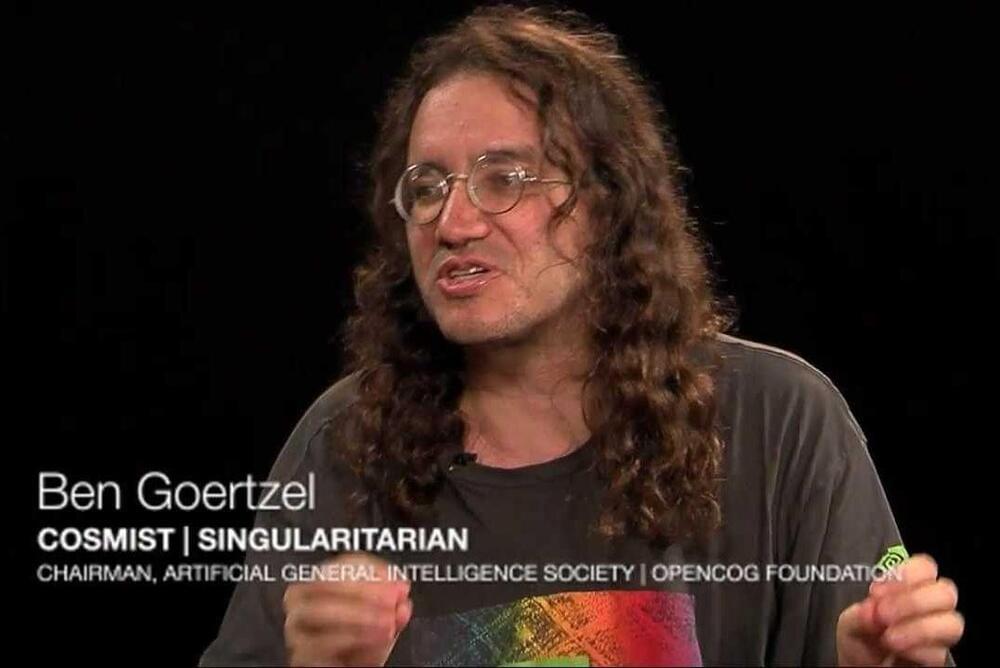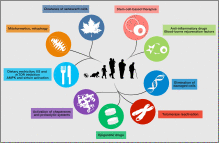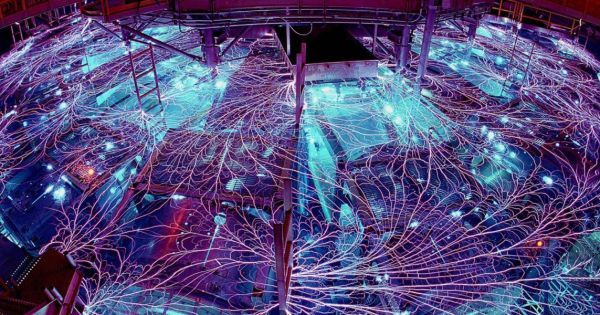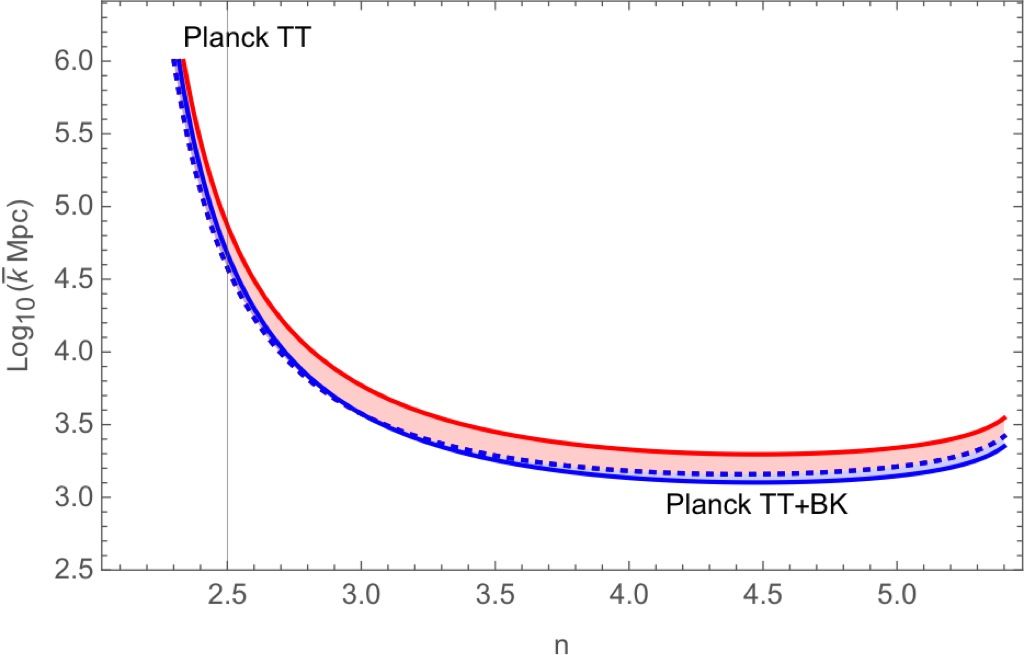Archive for the ‘evolution’ category: Page 131
Nov 6, 2016
The Hallmarks of Aging
Posted by Steve Hill in categories: biotech/medical, evolution, genetics, health, life extension
2013 saw the release of one of the most important papers in aging research and one that saw renewed interest and support for the concept of SENS.
Aging is characterized by a progressive loss of physiological integrity, leading to impaired function and increased vulnerability to death. This deterioration is the primary risk factor for major human pathologies, including cancer, diabetes, cardiovascular disorders, and neurodegenerative diseases. Aging research has experienced an unprecedented advance over recent years, particularly with the discovery that the rate of aging is controlled, at least to some extent, by genetic pathways and biochemical processes conserved in evolution. This Review enumerates nine tentative hallmarks that represent common denominators of aging in different organisms, with special emphasis on mammalian aging. These hallmarks are: genomic instability, telomere attrition, epigenetic alterations, loss of proteostasis, deregulated nutrient sensing, mitochondrial dysfunction, cellular senescence, stem cell exhaustion, and altered intercellular communication. A major challenge is to dissect the interconnectedness between the candidate hallmarks and their relative contributions to aging, with the final goal of identifying pharmaceutical targets to improve human health during aging, with minimal side effects.
Nov 4, 2016
Complicating the Picture for Aging, Cellular Senescence, and Bcl-xL
Posted by Steve Hill in categories: biotech/medical, evolution, life extension
More news on senolytics.
Efforts to build rejuvenation therapies that work by selectively destroying senescent cells are very much in the news of late. One class of senolytic drug candidates works by inducing apoptosis, a form of programmed cell death, via reduced levels of Bcl-2 family proteins, such as Bcl-2 itself, Bcl-xL, and Bcl-W, all of which normally act to suppress apoptosis. Senescent cells are inclined towards apoptosis already, so a modest nudge in that direction can destroy a fair proportion of these unwanted cells without causing harm to healthy cells. These apoptosis-related proteins have numerous other roles as well, however, since evolution is very much in favor of reusing the tools to hand. For example, Bcl-xL is also involved in mitochondrial damage protection, the immune response, cellular respiration and DNA repair: quite the portfolio, and all items that are connected to aging in one way or another. I noted an open access paper today that muddies the water considerably on the topic of Bcl-xL, as it shows that more Bcl-xL rather than less (a) reduces incidence of cellular senescence in tissue cultures, (b) extends life in nematode worms, and © is found in human centenarians, but not younger individuals.
Ordinary somatic cells, the vast majority of the cells in the body, become senescent when they reach the Hayflick limit at the end of their replicative life span, or in response to damage, or a toxic local environment, or as a part of the wound healing process. Senescent cells cease dividing, and most either self-destruct or are destroyed by the immune system soon afterwards. This behavior has evolved because it suppresses cancer incidence, at least initially, by removing those cells most at risk. Unfortunately not all are destroyed, and those that linger cause harm to surrounding tissues via a potent mix of inflammatory signals known as the senescence-associated secretory phenotype (SASP). Given enough senescence cells, as few as 1% or less of all the cells in an organ, significant dysfunction and inflammation is the result, contributing to the development and progression of age-related disease.
Continue reading “Complicating the Picture for Aging, Cellular Senescence, and Bcl-xL” »
Oct 15, 2016
Enhancing Humanity — What’s The Next Phase Of Human Evolution?
Posted by Shane Hinshaw in categories: evolution, singularity, space
I really love this topic – questioning what’s out there for humanity besides a singularity that may or may not happen or a discovery of the source powering an uber sophisticated kind of video game a.k.a. the *simulated* and likely *holographic universe*… Yes, evolution gets me all excited.
What follows now are possible futures for all of us, based on circulating theories on (continuing) evolution.
These futures show either a grinding halt to evolution, a continuing mutation and selection here on earth, some new form of evolution driven by technology, and (in a way related to technology, as well) a differentiation introduced by mimicking and adapting to a life on speculative space colonies.
Continue reading “Enhancing Humanity — What’s The Next Phase Of Human Evolution?” »
Sep 22, 2016
Femtotechnology: A technology that is Beyond Nanotechnology
Posted by Klaus Baldauf in categories: evolution, nanotechnology, particle physics, robotics/AI

Nanotechnology has reshaped the technological discoveries in the recent times. Nanotechnology has enabled the creation and invention of numerous things with wide potentialities. Every field is subject to constant evolution, nanotechnology is no exception. Researchers and scientists who are engaged with nanotechnology have now come up with femtotechnology.
Femtotechnology is widely defined as, “Hypothetical term used in reference to structuring of matter on the scale of a femtometer, which is 10^−15m. This is a smaller scale in comparison to nanotechnology and picotechnology which refer to 10^−9m and 10^−12m respectively.”
Continue reading “Femtotechnology: A technology that is Beyond Nanotechnology” »
Sep 20, 2016
When Evolution Fights Back Against Genetic Engineering
Posted by Carse Peel in categories: bioengineering, biotech/medical, evolution, genetics
“Gene drives,” a technology for controlling genetic traits, could revolutionize disease prevention. But nature has a way of thwarting scientific meddling.
Sep 17, 2016
Physicists Are Close to Producing Metallic Hydrogen, And It Could Change Everything
Posted by Elmar Arunov in categories: evolution, physics, space
The implications of the discovery of hydrogen in a metallic form make it a subject of great fervor. Teams are racing toward its use as a superconductor as well as a means of better understanding the universe.
The simplest and most common element, first in the periodic table, shouldn’t be difficult to crack, right? “What could be more simple than an assembly of electrons and protons?” asks Neil Aschcroft, a theoretical physicist at Cornell University. Yet, its supposed metallic form is quite the opposite. Apparently, the physics of hydrogen becomes more complex at high pressures. A sort of mega-evolution.
Hydrogen is naturally at a gaseous state, at room temperature and under atmospheric pressure. But hydrogen becomes solid, given enough of a forceful squeeze or at low temperatures. It also can transform into a liquid, if heat is added while squeezing. What is more confounding is the supposed ability of hydrogen, theoretically, to transform into metal if more extreme conditions are applied.
Sep 13, 2016
Quantum Cosmology and the Evolution of Inflationary Spectra [CL]
Posted by Karen Hurst in categories: cosmology, evolution, information science, quantum physics
We illustrate how it is possible to calculate the quantum gravitational effects on the spectra of primordial scalar/tensor perturbations starting from the canonical, Wheeler-De Witt, approach to quantum cosmology. The composite matter-gravity system is analysed through a Born-Oppenheimer approach in which gravitation is associated with the heavy degrees of freedom and matter (here represented by a scalar field) with the light ones. Once the independent degrees of freedom are identified the system is canonically quantised. The differential equation governing the dynamics of the primordial spectra with its quantum-gravitational corrections is then obtained and is applied to diverse inflationary evolutions. Finally, the analytical results are compared to observations through a Monte Carlo Markov Chain technique and an estimate of the free parameters of our approach is finally presented and the results obtained are compared with previous ones.
A. Kamenshchik, A. Tronconi and G. Venturi Tue, 13 Sep 16 11/91.
Continue reading “Quantum Cosmology and the Evolution of Inflationary Spectra [CL]” »
Sep 12, 2016
First multicellular organism inspires the design of better cancer drugs
Posted by Karen Hurst in categories: bioengineering, biotech/medical, evolution, information science
Amazing — fighting cancer with a new drug that self-assembles from individual cells that interact with each other into a complex structure through weak supramolecular interactions.
The first multicellular organism, Volvox, evolved from self-assembly of individual cells. Inspired by this organism, researchers from Brigham and Women’s Hospital have developed a novel approach for treating cancer. Drawing from the lessons of evolution, they designed anti-cancer molecules that can self-assemble with each other into a complex structure through weak supramolecular interactions. The complex, supramolecular therapeutics home into the tumor, increasing anticancer efficacy and reducing side effects.
To engineer the supramolecular therapeutics, the researchers developed a first-of-its-kind computational algorithm that simulates how anticancer molecules interact with each other at the molecular and atomic level. This understanding led to the design of the most optimal building blocks that can click with each other like LEGO blocks to form the supramolecular therapeutic. The researchers have named this computational algorithm Volvox after the biological organism.
Ashish Kulkarni, PhD, an instructor in the Division of Engineering in the Department of Medicine at the Brigham and Women’s Hospital, and the lead author of the paper published in September issue of ACS Nano, said, “The algorithm saves a lot of time during the development of next generation cancer therapy. Before we even go into experimental analysis, we are able to see whether or not there is a high enough concentration of the drug for the treatment to be effective. We hope that our method can eventually be used to treat many different types of cancer.”
Sep 10, 2016
Is Evolution Over? Synthetic Biology Anticipates Nature’s Next Steps
Posted by Elmar Arunov in categories: bioengineering, biological, evolution, genetics, sustainability
Synthetic biology is essentially an application of engineering principles to the fundamental molecular components of biology. Key to the process is the ability to design genetic circuits that reprogram organisms to do things like produce biofuels or excrete the precursors for pharmaceuticals, though whether this is commercially viable is another question.
MIT’s Jim Collins, one of the founders of synthetic biology, recently explained it to me as putting the engineering into genetic engineering.
“Genetic engineering is introducing a gene from species A to species B,” he said. “That’s the equivalent of replacing a red light bulb with a green light bulb. Synthetic biology is focused on designing the underlying circuitry expressing that red or green light bulb.”
Continue reading “Is Evolution Over? Synthetic Biology Anticipates Nature’s Next Steps” »
















